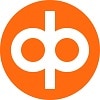Käytämme OP Pohjolan verkkosivustoilla ja sovelluksissa erilaisia evästeitä, yksilöiviä tunnisteita ja analytiikkaratkaisuja.
Osa evästeistä on sivustojemme luotettavan ja turvallisen toiminnan kannalta välttämättömiä. Muilta osin voit valita, mitä tietoja saamme kerätä ja mihin käyttötarkoituksiin voimme tietoja käyttää. Emme esimerkiksi hyödynnä tietoja kohdentamisessa ja markkinoinnissa ilman suostumustasi.
Evästeasetuksesi tallentuvat selaimeesi.
Kerromme tällä sivulla myös, miten evästeet toimivat, mitä työkaluja käytämme ja miten yksityisyytesi on suojattu.
Miten evästeet toimivat?
Evästeet ovat pieniä tekstitiedostoja, jotka tallentuvat laitteesi selaimeen. Ne kertovat meille esimerkiksi minkälaisella laitteella käytät verkkopalvelua ja oletko vieraillut sivustoillamme aikaisemmin.
Jos käytät eri selaimia, niissä voi olla eri evästeasetukset. Jos samaa laitetta ja selainta käyttää useampi henkilö, yhden käyttäjän tekemät evästevalinnat koskevat myös muita käyttäjiä, ellei evästeitä poisteta selaimesta käytön jälkeen.
Jos olet sallinut vain välttämättömät evästeet, kysymme suostumustasi uudelleen 6 kuukauden kuluttua. Muut evästeasetuksesi ovat voimassa 12 kuukautta.
Jos poistat evästeet selaimesta, kysymme suostumustasi uudelleen, kun vierailet verkkosivustollamme seuraavan kerran.
Evästeiden estäminen
Evästehistorian poistaminen
Voit tyhjentää selaimesi asetuksista evästehistorian, jolloin selaimesi tallentamat aikaisemmat evästeet poistuvat. Evästehistorian poistaminen ei estä uusien evästetietojen muodostumista. , vaan sinun on peruttava evästesuostumus OP Pohjolan sivuilla.
Aikaisempien kohdentamistietojen käytön estäminen
Jos olet aikaisemmin sallinut kohdentamisevästeet, uudet evästeasetuksesi eivät heti poista vanhoja evästetietoja. Saatat nähdä kohdennettua markkinointia yhteistyökumppaniemme sivustoilla vielä 60 päivän ajan suostumuksen perumisesta.
Kolmansien osapuolten verkkomainonnan estäminen
Jos et ole aikaisemmin estänyt kolmansien osapuolten evästeitä, mainostajat ja mainosverkostot kohdentavat mainontaa sinulle OP Pohjolan sivuilta aiemmin kerätyn selainpohjaisen käyttäytymistiedon perusteella.
Voit estää aikaisemmin luovutettujen tietojen perusteella näytettävän OP Pohjolan ulkopuolisen verkkomainonnan kokonaan tai yrityskohtaisesti.
Estä kohdennettu verkkomainonta Your Online Choices -sivustolla
Kaikkien evästeiden estäminen
Jos haluat estää evästeiden käytön kokonaan, voit tehdä sen muuttamalla selaimesi asetuksia. Tarkemmat ohjeet löydät käytössäsi olevan selaimen ohjeista.
Jos estät kaikki evästeet käyttäen evästeiden esto-ohjelmia tai selaimesi asetuksia, emme voi taata palvelujen perustoimintojen, kuten kieliasetusten ja kirjautumisen, toimivuutta.
Mitä työkaluja käytämme ja kuinka kauan tietoja säilytetään?
Käytämme sekä istuntokohtaisia että pysyviä evästeitä:
- Istuntokohtaiset evästeet ovat olemassa vain yhden istunnon eli asiointikerran ajan. Ne poistetaan automaattisesti, kun suljet selaimen. Istuntoevästeiden avulla pystyt esimerkiksi liikkumaan sivulta toiselle, kirjautumaan palveluun ja käyttämään erilaisia laskureita ja verkkolomakkeita.
- Pysyvät evästeet jäävät selaimeesi tai laitteellesi myös istunnon loppumisen jälkeen määräajaksi, jos et poista niitä sitä ennen selaimesi asetuksista. Pysyvien evästeiden avulla parannamme käyttökokemusta. Niiden avulla sivusto tunnistaa laitteesi ja muistaa asetuksesi, esimerkiksi kielivalintasi, kun vierailet sivustolla uudelleen.
Työkalulistaus
Kerromme jokaisen työkalun kohdalla evästeiden enimmäissäilytysajan.
Välttämättömät evästeet:
SAP: Käytämme seuraavia istuntoevästeitä, jotka kaikki ovat välttämättömiä verkkosivuston toiminnan mahdollistamiseksi:
- evästettä "route" käytetään istunnon hitautta varten
- evästettä "careerSiteCompanyId" käytetään lähettämään pyyntö oikeaan palvelinkeskukseen
- eväste "JSESSIONID" asetetaan kävijän laitteeseen istunnon aikana, jotta palvelin voi tunnistaa kävijän
- "Load balancer cookie" (evästeen todellinen nimi voi vaihdella) estää kävijän ponnahtamasta instanssista toiseen
Säilytysaika selainistunto.
Toiminnan kehittämisevästeet
Analysoimme Adobe Analyticsin avulla kävijöiden aktiivisuutta, käyttäytymistä, virhetilanteita, käyttömääriä ja liikennettä OP Pohjolan omilla verkkosivustoilla ja mobiilisovelluksissa. Käytämme näitä tietoja uusien palvelujen ja liiketoiminnan kehittämiseen OP Pohjolan sisällä. Säilytysaika enintään 2 vuotta.
Kohdentamisen evästeet ja kolmannen osapuolen markkinointievästeet
Kolmannen osapuolen (Facebook, Instagram, LinkedIn, viestipalvelu X ja YouTube) markkinointievästeiden avulla voimme kohdentaa käyttäjälle OP Pohjolan ajankohtaista markkinointia eri verkkosivustoilla ja yhteisöpalveluissa. Niiden avulla saamme myös tilastotietoa markkinoinnista ja kohderyhmistä.
Markkinointievästeiden säilytysajoista vastaavat kolmannet osapuolet omien tietosuojakäytäntöjensä mukaisesti.
Yhteisöliitännäiset
Käytämme OP Pohjolan verkkosivustoilla sosiaalisia laajennuksia eli kolmannen osapuolen yhteisöliitännäisiä. Niiden avulla voit nähdä sivustoilla esimerkiksi Facebookin, Instagramin, LinkedInin, SoundCloudin, Viestipalvelu X:n ja YouTuben sisältöjä.
Yhteisöliitännäiset latautuvat sosiaalisen median palveluntarjoajien omilta palvelimilta. Evästevalintasi eivät toistaiseksi vaikuta yhteisöliitännäisten evästekäytäntöihin. Liitännäiset voivat asettaa omia evästeitä omien periaatteidensa mukaisesti ja kerätä evästeiden avulla tietoa käyttäjistä.
Yksityisyytesi on meille tärkeä
Evästeillä ja eri työkaluilla kerätyt tiedot ovat OP Pohjolan rekisterinpitäjien omistuksessa. Kumppanimme toimivat tietojen käsittelijöinä OP Pohjolan puolesta ja lukuun.
Markkinointievästeiden suostumuksella voimme luovuttaa tietoja kolmansille osapuolille. Näiden tietojen käytöstä vastaavat kolmannet osapuolet yhteisrekisterinpitäjinä OP Pohjolan kanssa tai itsenäisinä rekisterinpitäjinä omien tietosuojakäytäntöjensä mukaisesti.
Verkkoanalytiikkaa keräämme ja hyödynnämme ainoastaan kehittämisevästeiden suostumuksella. Digipalveluidemme verkkoanalytiikkaa käsittelee OP Pohjolan palveluntarjoaja Adobe. Seuraamme Adobe Analytics -työkalun avulla, että digitaaliset palvelumme toimivat oikein ja virheettömästi ja vastaavat asiakkaidemme tarpeisiin. Analysoimme esimerkiksi virhetilanteita, käyttömääriä ja liikennettä OP Pohjolan omilla verkkosivustoilla ja mobiilisovelluksissa. Varmistamme verkkoanalytiikan kehityksessämme, että yksityisyyden suoja toteutuu.
Adobe tarjoaa Adobe Analytics –työkalun OP Pohjolalle henkilötietojen käsittelijän roolissa. Adobe käyttää myös itsenäisen rekisterinpitäjän roolissa Adobe Analytics -evästeillä kerättyjä teknisiä tietoja (IP-osoite, selaimen ja laitteen tyyppi, asetukset, eväste-ID, versio, kieliasetukset) tuotteidensa testaamiseen ja kehittämiseen. Nämä tiedot ovat pseudonyymeja henkilötietoja, mutta Adobe ei tunnista yksittäisiä OP Pohjolan sivustojen käyttäjiä vaan käyttää dataa massamuodossa. Adobe myös luo täysin anonyymeja raportteja yritysasiakkaidensa, kuten OP Pohjolan, Adobe-työkaluilla keräämästä datasta. Voit kieltää Adoben evästetietojen käytön seuraavan linkin takaa, kohdasta Adobe Experience Cloud: Adoben tietosuojakeskus
Vastuullisena toimijana olemme sitoutuneet suojelemaan yksityisyyttäsi tietosuojalainsäädännön mukaisesti.
Lue lisää henkilötietojen käsittelystä OP:lla
Tutustu kumppaniemme ja sosiaalisen median palvelujen omiin tietosuojakäytäntöihin:
Adobe
YouTube
